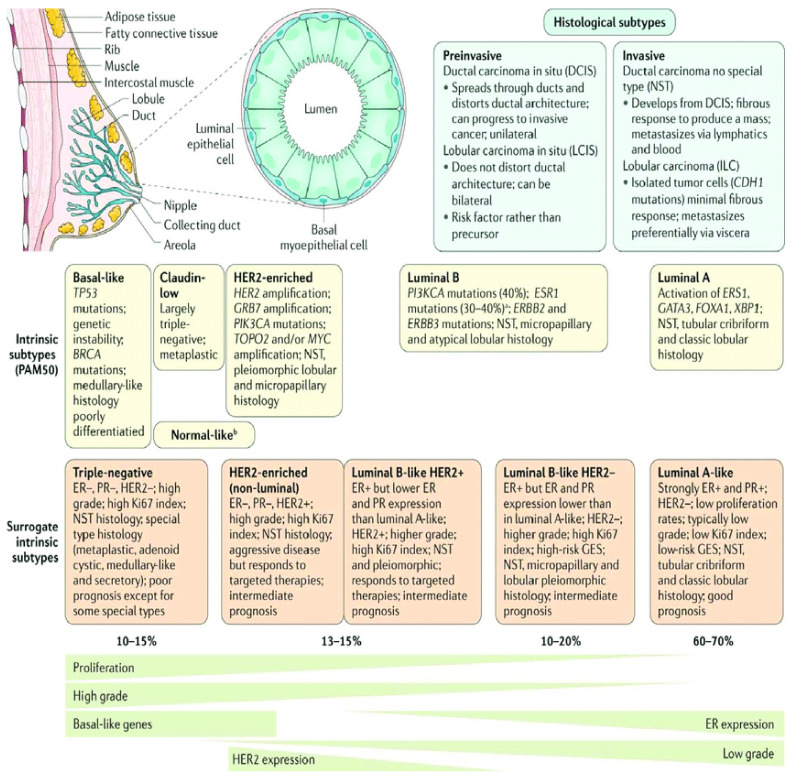Figure 1.
Breast cancer classification [2]. Histological and molecular characteristics of breast cancer have important implications for cancer therapy. Hence, several classifications based on molecular and histological characteristics are developed. The histological subtypes of breast cancer (top right) are the most frequent subtypes, including ductal carcinoma and lobular carcinoma, which are the invasive lesions, while their prevalent counterparts are ductal carcinoma in situ and lobular carcinoma in situ. Intrinsic subtype classification by Perou and Sorlie is based on a 50-gene expression signature (PAM50). The surrogate intrinsic subtype classification of breast cancer is used clinically, and it is based on immunohistochemistry and histology expression of key proteins, including progesterone receptor (PR), estrogen receptor (ER), human epidermal growth factor receptor 2 (HER2), as well as proliferation marker Ki67. Breast cancer tumors expressing ER and/or PR are “hormone receptor-positive”. Tumors lacking ER, PR but showing expression of HER2 are termed as “HER2 positive breast cancer”, while tumors lacking ER, PR, and HER2 are called “triple- negative breast cancer” [2].

